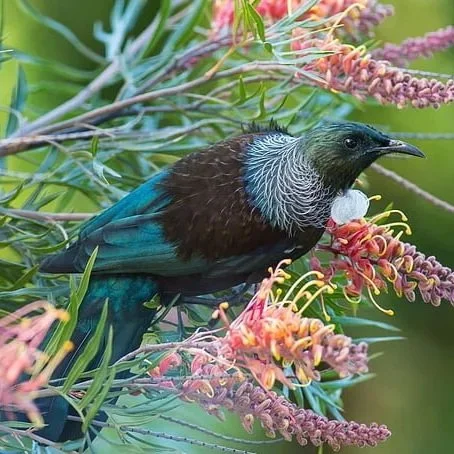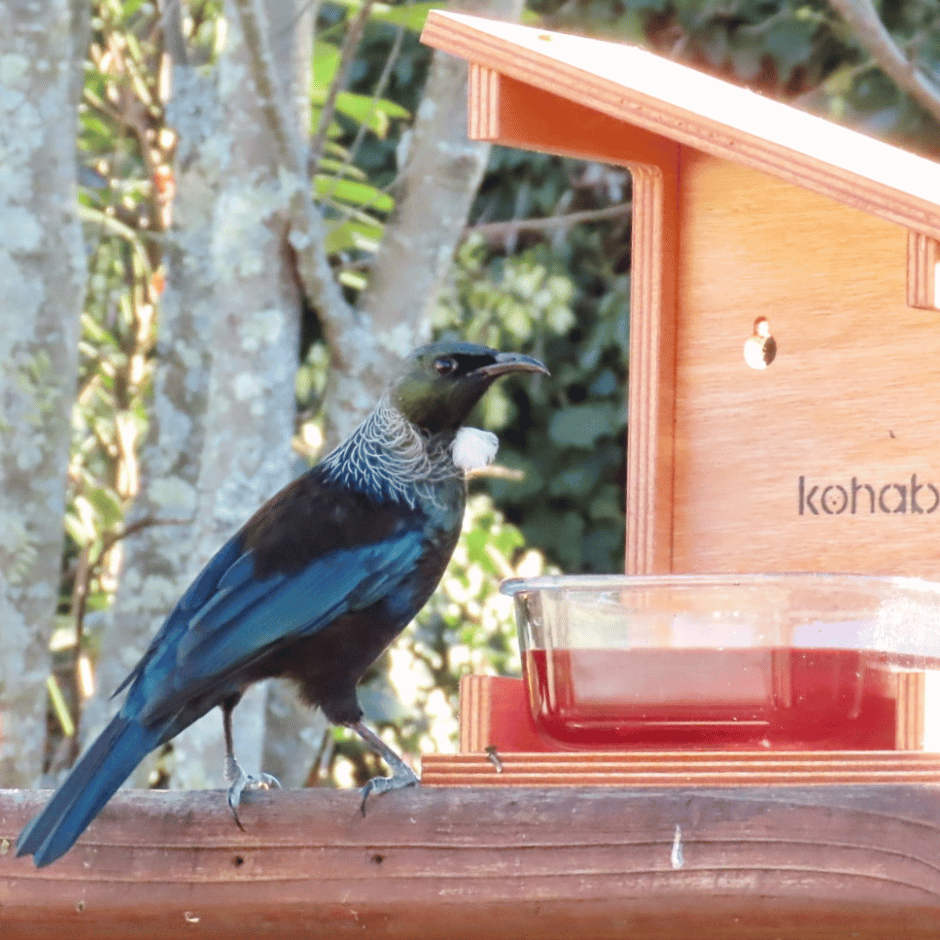Why Tūī Are So Noisy When They Fly
Tūī can be very noisy when they fly? Discover how they control their wing sounds to impress, warn, and communicate.
If you live in Aotearoa, you’ve almost certainly had a cheeky Tūī whizz past you at full speed. You’ll know the sound, it's a loud swoosh or whirr of wings that can make you jump. It almost sounds mechanical. They do it most in spring and summer, but what’s really interesting is why they do it.
Tūī don’t have to be noisy when they fly. They can actually choose to turn the noise on or off. By adjusting their outer wing feathers, they create a vibrating effect as air moves across them, and that’s what makes the distinctive sound.
Why Tūī Use Noisy Wingbeats:
To Impress Other Birds
Tūī are bold, showy, slightly brash birds. That loud wingbeat is part of their arrival announcement, a way of saying, “I’m here, I’m confident, and I’m not to be messed with.”
During the breeding season, males use the wing noise to catch the attention of females they want to court, much like a Blackbird sings to impress. It can also act as a warning to other males to stay away from the female they’re trying to charm.
To Warn Away Rivals
Tūī are fiercely territorial, especially around nectar sources. A louder wingbeat can act as an aggressive signal, telling other Tūī to back off and making it clear who’s claiming the space.
They’re also known to swoop or dive-bomb humans who get too close to their nests… or sometimes just because they feel like it. They’re pretty cheeky birds!
To Signal in Dense Forest or Busy Feeding Spots
In thick trees or crowded feeding areas, they use the sound to avoid each other, a shout out of “I’m coming through, watch out!” to prevent mid-air collisions.
More Tūī Stories
If you enjoy learning about New Zealand’s native nectar-lovers, you might also like:




